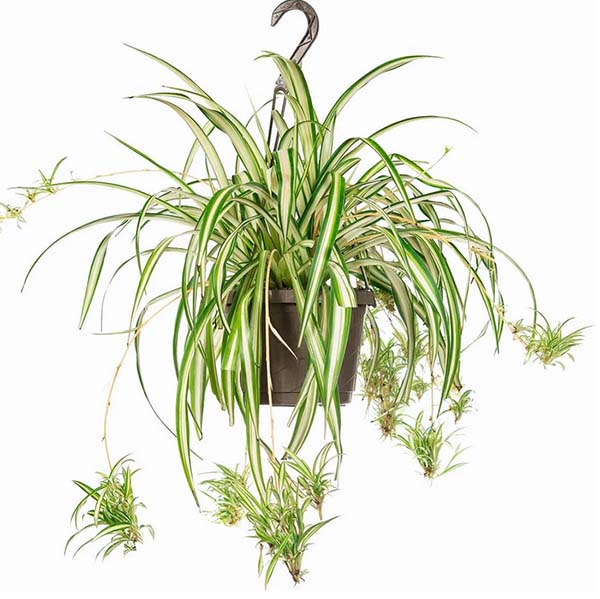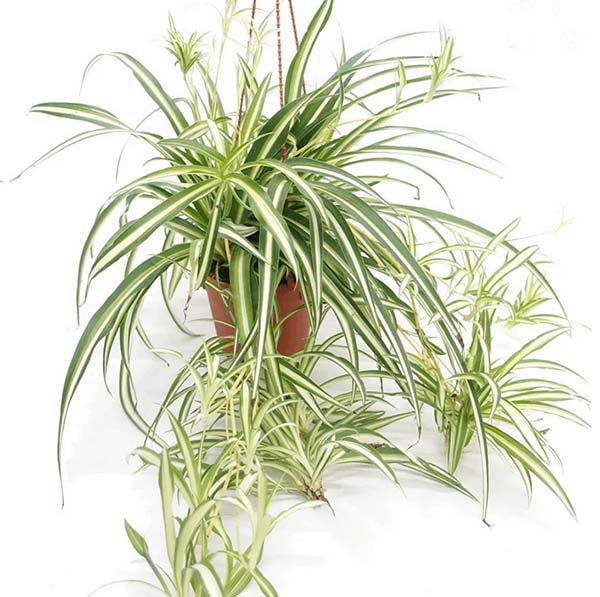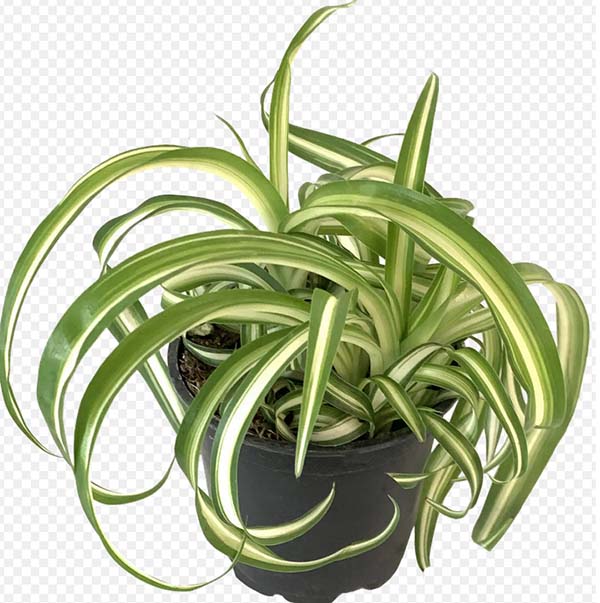Spider Plant (Chlorophytum)
Common Names: Spider plant, spider ivy, ribbon plant
Botanical Name: Chlorophytum comosum
Spider plant, Chlorophytum comosum, is one of the most common and well-known of all houseplants. It is especially popular with beginners, being easy to grow and propagate, tolerant of neglect, and able to thrive in nearly any type of condition. It gets its common name from the small plantlets produced on long trailing stems that vaguely resemble spiders.

This clump-forming, perennial, herbaceous plant, native to coastal areas of South Africa, has narrow, strap-shaped leaves arising from a central point. The leaves may be solid green or variegated with lengthwise stripes of white or yellow. The leaves are not flat, but appear channeled or folded down the middle. Plants grows 12-15″ tall. The thick, fleshy roots and rhizomes evolved to store water, allowing it to survive inconsistent watering.
Despite their creepy-crawly name, spider plants (Chlorophytum comosum) are among the most popular houseplants to grow. When grown indoors, these perennials will survive less-than-perfect conditions, and they are stunning if you can closely mimic their native tropical environment by providing warm temperatures and humid air.
These plants grow rosettes of slender, gently arching leaves that can stretch from around 12 to 18 inches long. The leaves can be green or striped green and white. Mature plants regularly send out long stems that bear small, star-shaped flowers.
Once the flowers fall off, tiny plantlets form in their place, which ultimately grow their own roots and can be snipped off to create new potted plants.
Spider plants are often grown in containers as hanging plants due to the cascading nature of their foliage and their long stems with plantlets. They also look great when grown atop columns. If you place their container on a shelf or table, make sure the long leaves aren’t getting crushed and the long plantlet stems don’t get so heavy that they pull over the pot.

Types of Spider Plants
There might be more cultivars and varieties of spider plants than there are spiders. Here are a few of our favorites:
Vittatum
This variegated variety won’t shock you with its beauty since it is very common. The leaves are pale green with a central stripe that is white. It's a slower grower than all-green varieties.

Variegatum
If you want longer leaves - to 16 inches (40.6 cm) long - try this one. The inch-wide (2.5 cm) leaves are trimmed in white. But don't pick this one if you want lots of offsets.
Milky Way
This cultivar has the opposite color design of Variegatum. It has bands of green on either side of each leaf and a broad white center.
White Stripe
Here's a variety with a thin pale line down the leaf center while the plant is young. The white disappears as the leaf matures. Flower stalks can be yellow or pale cream.
Mandaianum
If you want a dwarf spider plant, this is one to consider. The dark green leaves only get to 4 to 6 inches long, dark green and they carry a canary-yellow stripe





